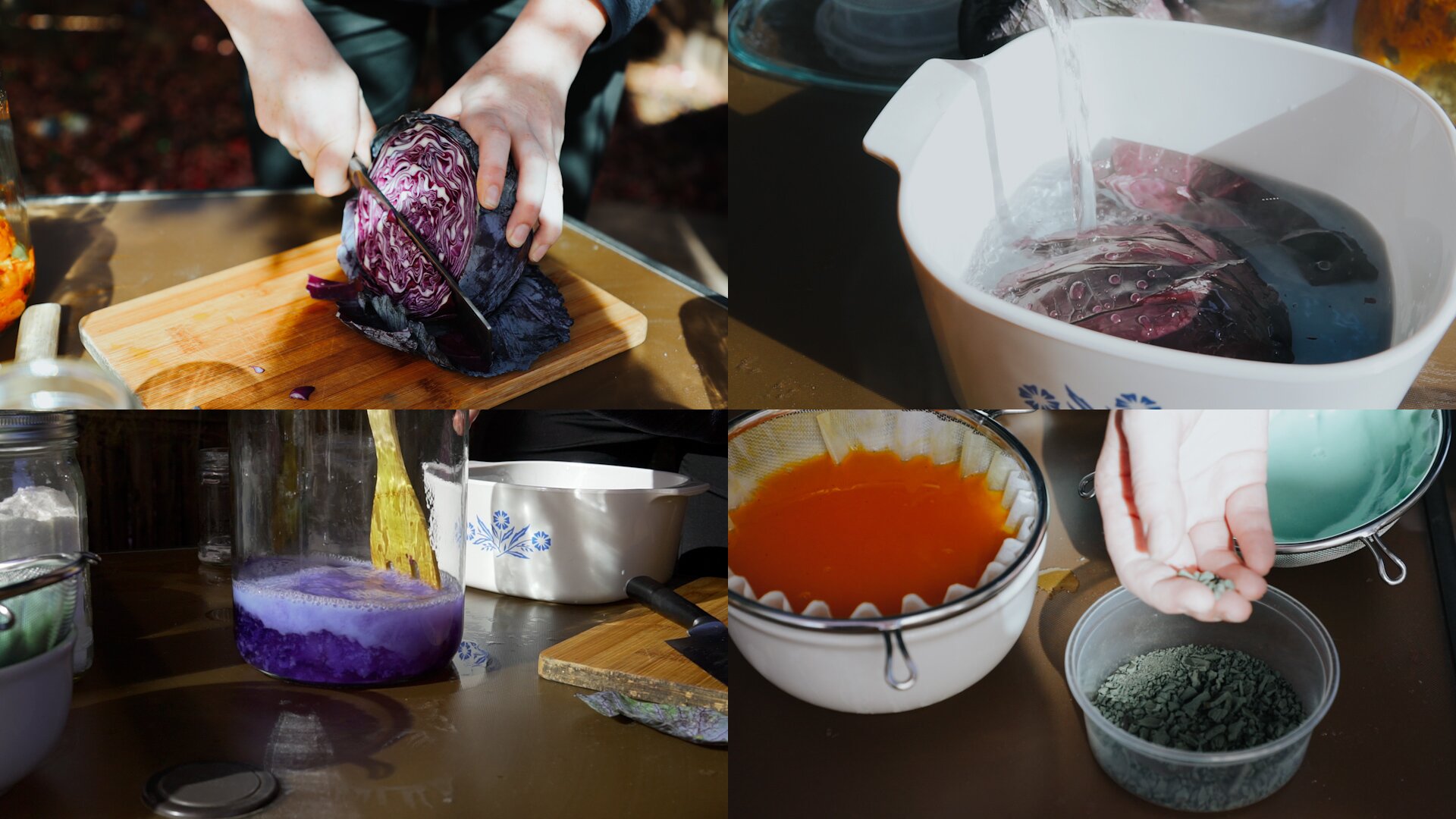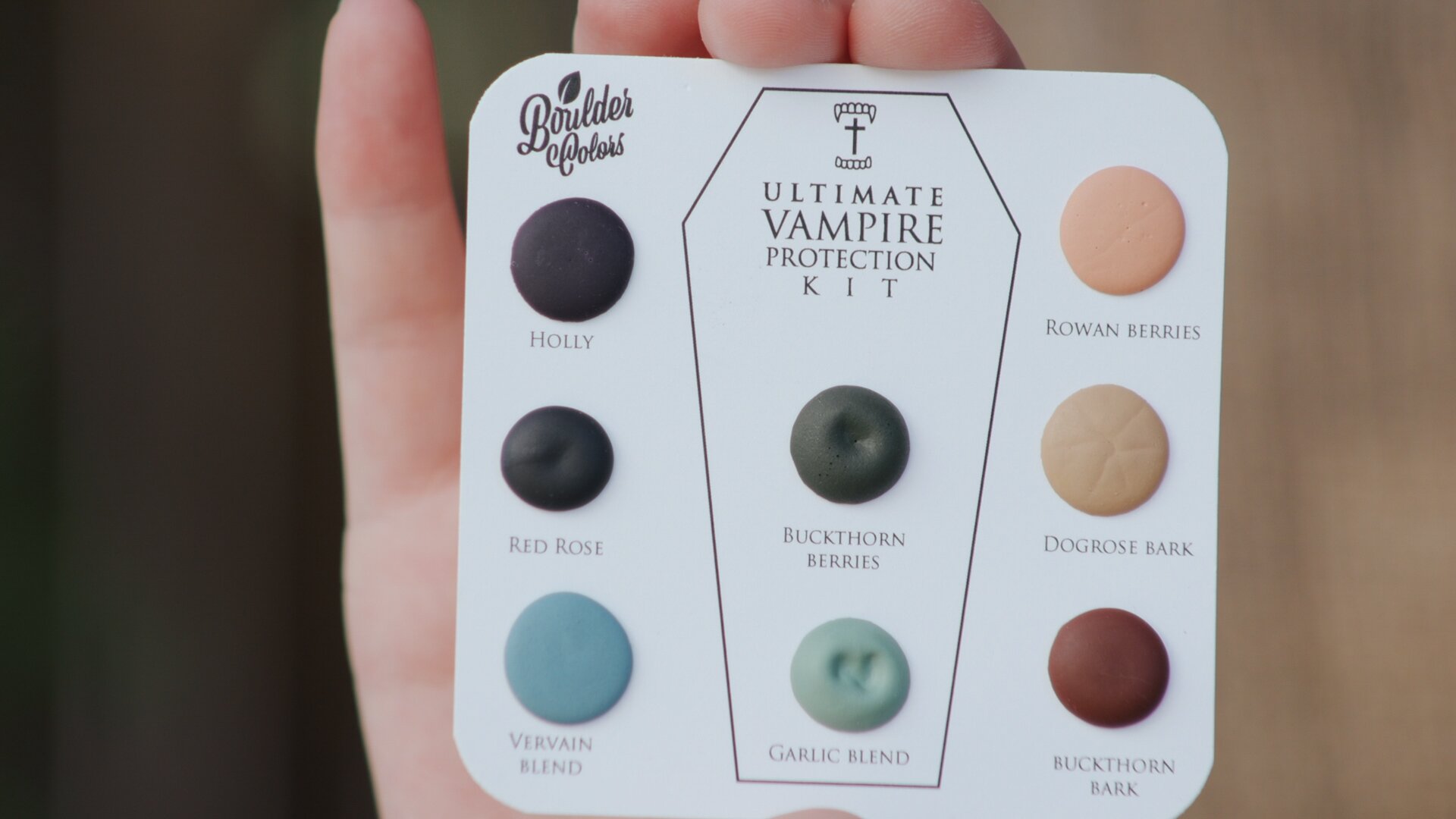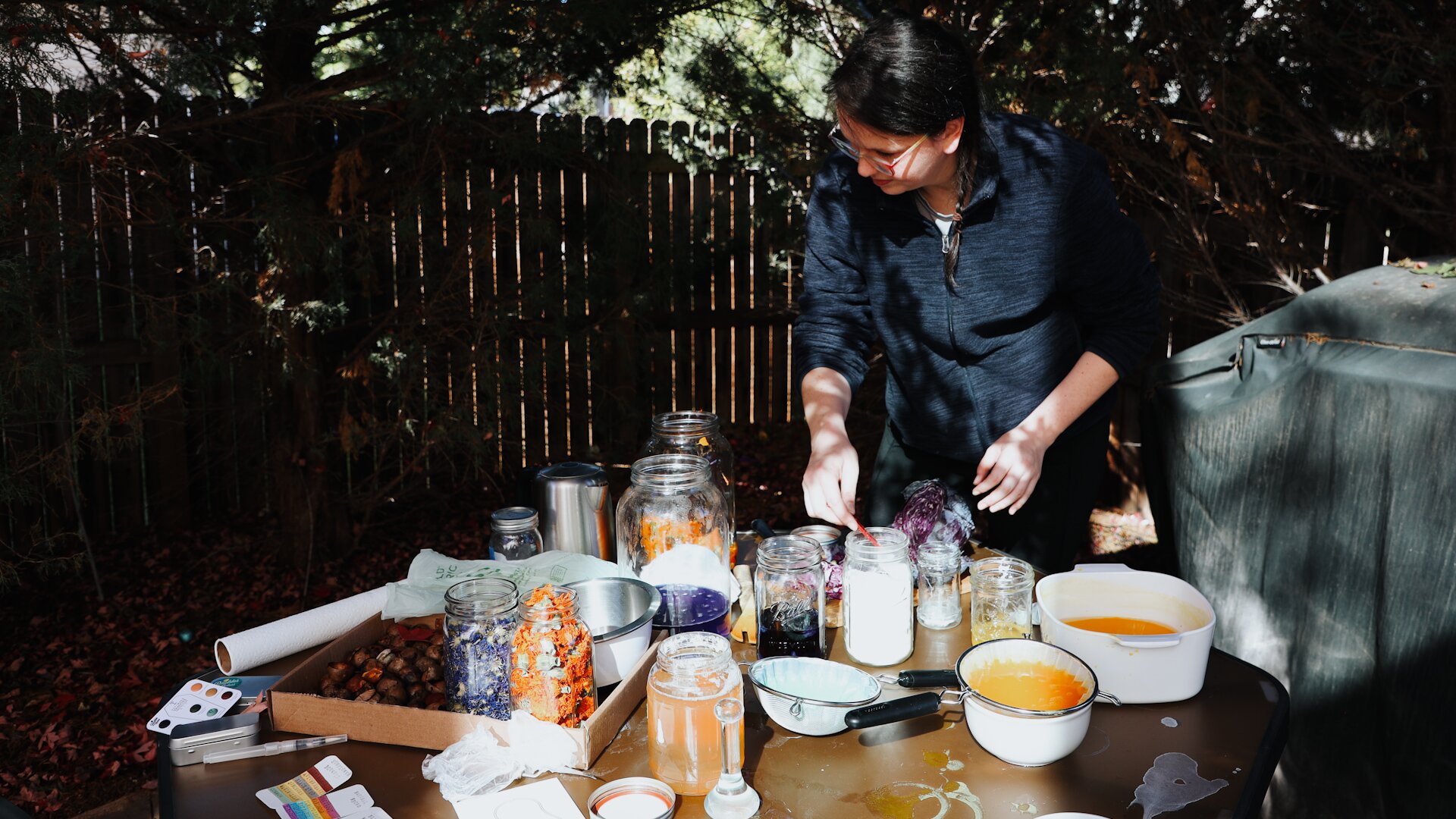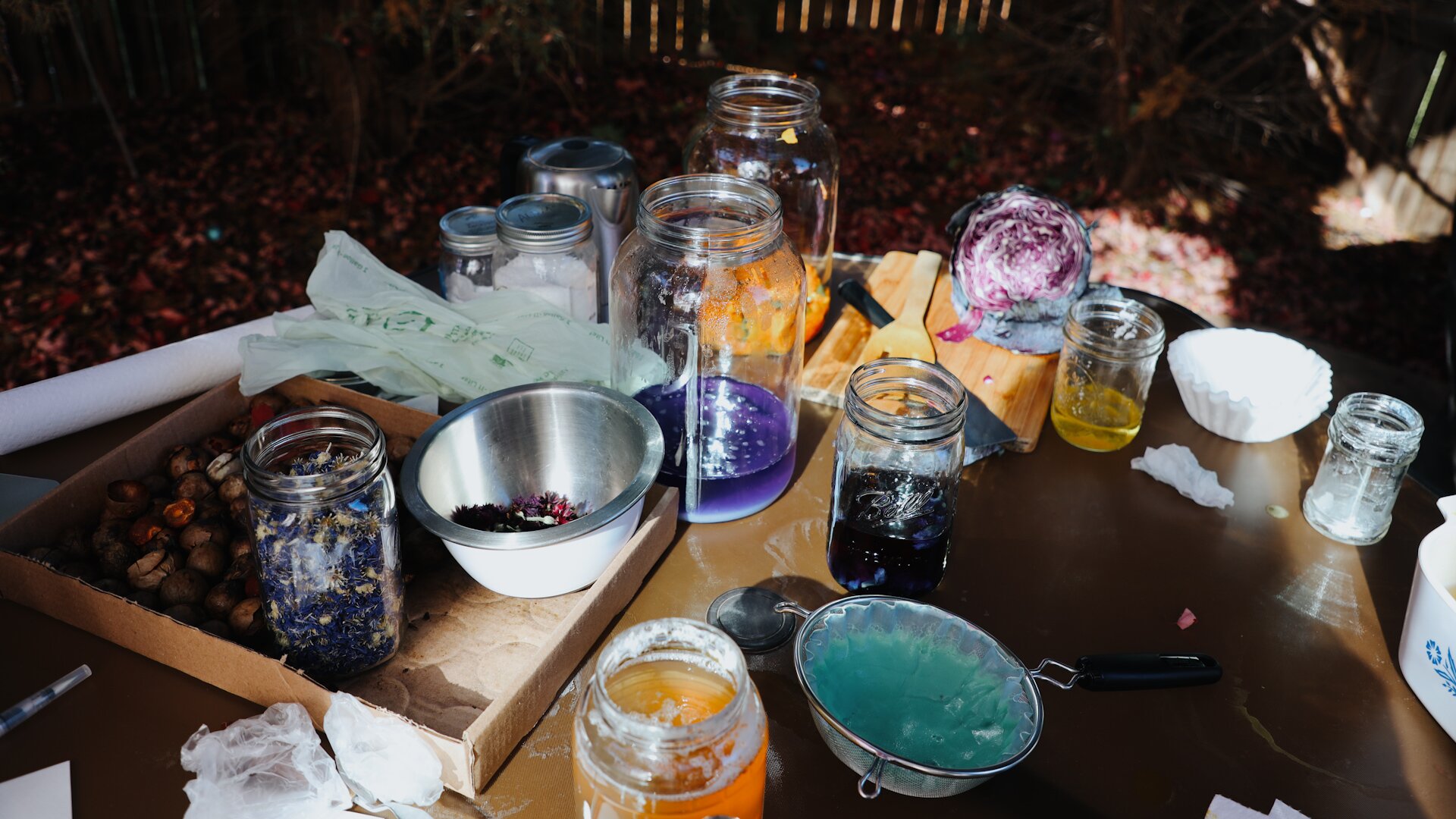Colorado artist turns food waste into whimsical watercolor paints

LONGMONT, Colo. — The glass table sitting in Amanda Fan’s backyard looks like it belongs in a high school science class, strewn with glass jars, chemical powders and raw plant materials. Fan positions herself behind the table, surveying her spread.
Despite what it might look like, Fan isn’t readying a biology lecture. She’s making watercolor paints — from plants. Today she has avocado pits, marigolds and red cabbage. It’s something Fan and her family have been doing for nearly three years now.
The paint-making process
Sitting on the glass table in Fan’s backyard is a large head of red cabbage.
“This is my absolute favorite pigment to work with,” says Fan as she chops the cabbage into large pieces. “I get this from a local farm.”
She places the pieces of chopped cabbage into a big ceramic bowl and covers the vegetable with boiling water. The water immediately turns blue. After it steeps for ten minutes, it turns purple.
“To make the pigments you need to transform the liquid dye into a solid pigment,” says Fan about the next steps.

Here’s where science class begins. She binds the liquid to a metallic salt, or mordant, by pouring a white powder into the liquid. A second white power — a precipitator; Fan is using washing soda — is added to create a chemical reaction.
“You’ll see kind of like a middle school volcano reaction,” Fan laughs. “And that will turn our dye into a solid.”
There are a few more steps which fan details in her book, Boulder Lakes, Turning Plants into Watercolors.
Part of the fun is discovering what color paint will result from different plants.
“At the end of the day it’s a guessing game,” says Fan. “You can hope for what you’re going to get, but you never know.”
Peach pits make a bright blue color, black cherries make orange, and the purple leaves from a sand cherry tree in Fan’s front yard turned a bright, electric green.
“We were losing our minds,” she laughs.
Plant puns
One of Fan’s favorite parts of running Boulder Colors is coming up with creative palette names.
“I’m obsessed with puns, I love a good plant pun,” Fan laughs.
Their "Vampire Protection Kit" features protective plants that were historically used to ward off evil, including garlic, vervain and buckthorn.
“Have yourself a cherry little Christmas” features paint from every part of the cherry — the leaves, blossoms and pits.
“Guacamole Paint” is a partnership with local restaurant Summit Tacos. The restaurant donates their leftover guacamole ingredients including avocado pits, red onion skin and cilantro stems. Fan uses the materials to make kits with paintable postcards included.
The list goes on and on … and on. Boulder Colors currently has over 50 clever palettes on their website — and that doesn’t include dozens of past products.


Plant paint for a better future
At the heart of Fan's Boulder Colors project is the desire to make the world a better place, even just a little bit. Her biggest focus is on sustainability, using nearly all locally sourced plants that would have been composted or thrown out anyway.
“I just like feeling part of something, I feel like I’m part of the process. I’m adding one last stop before compost,” says Fan. “We’re giving these plants one more last bit of life.”
She also wants to encourage others to make their own paint, to lessen toxic chemicals and animal-based products that can be found in more traditional paint.
“My goal eventually is to put myself out of business by teaching everyone else how to make their own local paints,” says Fan.
She laughs, “I mean, I know that’s a bad business plan, but that’s truly the goal here. I have no ulterior motives other than connecting with my community and taking a little bit of waste out, creating a little bit of joy.”
You can follow Boulder Colors' journey on their Instagram.


Alexis Kikoen is a senior producer at Rocky Mountain PBS and can be reached at alexiskikoen@rmpbs.org.
Related Stories
Down the watercolor rabbit hole
“The idea kind of sprang from a video I saw in the first week of the pandemic about avocado pit dyeing for homeschoolers,” says Fan. “I did it with my kids and we all loved it and I kind of went down the rabbit hole.”

Since spring 2020, Fan and her family have created over 100 different colors using over 100 different flowers, fruits and vegetables. Her two grade-school-aged kids love foraging for materials and helping to create the pigments. Fan’s husband Peng creates all of the graphics for their brand, Boulder Colors.
“I was making paints and wasn’t using them, I had a basement full of paint” says Fan. “So I turned this from a little kitchen project into this brand.”
Fan started making connections with local restaurants and farms. She visited a local farmer’s market weekly, and vendors began saving their scraps for her. She regularly gets calls from local restaurants with boxes of food waste saved for her things like fruit pits and vegetable stems.
"The support from the community has been so overwhelming," says Fan. “The whole point is that it’s small batch, handmade. I want to keep it true to the original mission.”